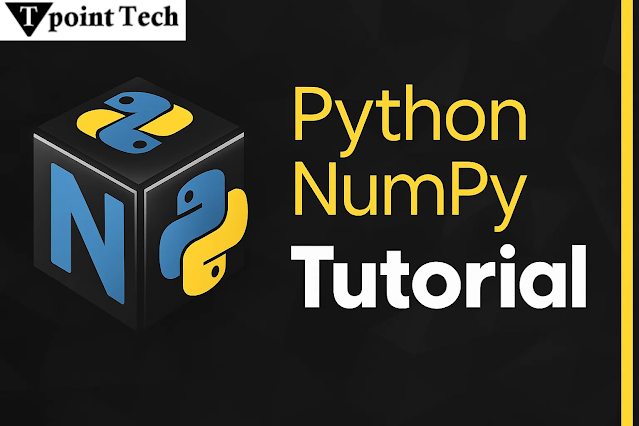Mastering Pandas in Python – Step-by-Step Tutorial
In the world of data analysis, one Python library stands out as an indispensable tool for both beginners and professionals: Pandas. Whether you're cleaning messy datasets, performing advanced data manipulations, or preparing your data for machine learning models, Pandas has you covered.
This Python Pandas Tutorial is your step-by-step guide to understanding the power of Pandas in real-world data analysis. We’ll start with a solid Pandas introduction and walk you through its core concepts, features, and applications — all without diving into complex code.
🔍 Pandas Introduction: What Is It and Why Does It Matter?
Pandas is an open-source Python library primarily used for data manipulation and analysis. The name “Pandas” is derived from the term Panel Data, which refers to multidimensional structured data sets. It was created to make working with structured data fast, simple, and expressive.
So, what makes Pandas so essential?
At its core, Pandas provides two powerful data structures: Series and DataFrame. These structures allow users to manipulate data in rows and columns — similar to how you might work with spreadsheets in Excel, but with significantly more flexibility and computational power.
🧠 Why Learn Pandas?
Before diving deeper into this Python Pandas Tutorial, it's important to understand the why behind learning Pandas. Here's what makes it so valuable:
-
Easy Data Cleaning: Pandas simplifies the process of detecting and handling missing or inconsistent data.
-
Flexible Data Manipulation: Whether it's reshaping, merging, or aggregating data, Pandas offers clear and efficient tools.
-
Great for Exploratory Data Analysis (EDA): Pandas allows you to quickly explore data patterns, trends, and outliers.
-
Integration with Other Libraries: Pandas works seamlessly with other Python libraries like NumPy, Matplotlib, and Scikit-learn.
In short, mastering Pandas gives you the foundation to perform nearly any kind of data analysis.
🚀 Key Features Covered in This Python Pandas Tutorial
Let’s break down the most important concepts you’ll encounter when learning Pandas, step by step.
1. Series – The One-Dimensional Data Structure
A Series is a one-dimensional array-like object that holds data along with labels, known as its index. Think of it as a single column of a table. This makes it great for storing things like temperature readings, sales numbers, or age lists.
2. DataFrame – The Two-Dimensional Workhorse
A DataFrame is a table-like structure with labeled axes (rows and columns). It’s the most commonly used structure in Pandas and is perfect for working with tabular data like spreadsheets or SQL tables. With DataFrames, you can easily perform operations like filtering, sorting, and aggregating.
3. Data Importing
Pandas supports data import from multiple sources including CSV files, Excel sheets, SQL databases, and even web APIs. It simplifies the data loading process so you can focus on analysis rather than format conversions.
4. Data Cleaning and Preparation
No dataset is perfect. Pandas provides tools to:
-
Handle missing data
-
Replace or drop null values
-
Standardize text data
-
Convert data types
5. Filtering and Selection
You can select specific rows, columns, or even apply conditions to filter your dataset for more focused analysis. This is incredibly useful when working with large datasets.
6. Grouping and Aggregation
Pandas makes it easy to group data based on categorical values and apply summary functions like sum, mean, and count. This is essential for creating meaningful insights, such as total sales per region or average test scores per school.
7. Merging and Joining
Whether you're combining data from multiple sources or matching related records, Pandas has functions to join datasets on common keys or indices — much like SQL joins.
8. Data Exporting
Once your data is clean and insights are drawn, you can export the results back to CSV, Excel, or even databases using a single line of Pandas functionality.
🛠 Real-World Applications of Pandas
This Pandas introduction would be incomplete without a glimpse into how it's used in real-world scenarios:
-
Finance: Time-series data analysis, stock price modeling, and portfolio performance evaluation.
-
Healthcare: Processing patient records, analyzing medical histories, and tracking health metrics.
-
Retail: Customer segmentation, sales trend analysis, and inventory optimization.
-
Education: Analyzing student performance, survey results, and curriculum efficiency.
-
Web Analytics: Traffic monitoring, behavior tracking, and A/B test results.
💬 Final Thoughts from Tpoint Tech
At Tpoint Tech, we believe learning should be both accessible and impactful. This Python Pandas Tutorial is just the beginning of your data journey. By understanding the Pandas introduction and its fundamental features, you're well-equipped to take on more complex data tasks with confidence.
Whether you're preparing for a data analyst role, conducting academic research, or simply trying to make sense of large datasets, Pandas is the tool to learn. It bridges the gap between raw data and actionable insight, making it an essential part of any data professional's toolkit.
Stay tuned for our next guide where we’ll dive into Pandas with real datasets, complete with visualizations and advanced manipulation techniques.




Comments
Post a Comment